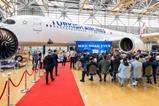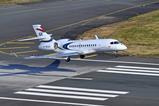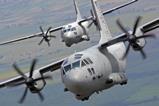Just seven flights and 9h into its test campaign, Airbus Helicopters Racer technology demonstrator has already beaten its 220kt (407km/h) target cruise speed and opened up 80% of its flight envelope since its 24 April maiden sortie.
Hailing the milestones on 23 July, Airbus Helicopters head of research and technology Tomasz Krysinski said such a rapid pace of flight testing was unprecedented in his 40 years in the industry.

“So in a few flights covering almost all the flight envelope it has never happened in the history of rotary-wing,” he says.
The Racer beat its target speed during a test flight on 21 June, hitting 227kt in level flight, says its test pilot Herve Jammayrac.
That milestone was also achieved without fairings installed on its landing gear or a highly aerodynamic main rotor cowling, as such “we believe we have additional margin for faster flight,” he adds.
“We managed to already go to 227 knots, but that story is not finished,” says Krysinski, although he declines to provide a target speed for future flights.
Flights have also taken place without the autopilot engaged and “it is very, very stable in cruise”, says Jammayrac. The Racer has also been tested on more dynamic manouevres, for example flying at a bank angle of 45° at speeds above 200kt.
Building on the previous X3 demonstrator, the twin-engined Racer combines a single main rotor with twin pusher-propellers installed on V-shaped box wings. It is designed to achieve higher speeds with lower CO2 and noise emissions than conventional helicopters.
Test flights are paused for the summer and to allow routine maintenance but will resume in September as the company targets opening up the remainder of the flight envelope.
A next step for the programme will be to test the ‘ecomode’ function on its twin Safran Helicopter Engines Aneto-1X powerplants.
This will allow one of the engines to be shut down in cruise and then rapidly restarted – within 10s if needed – improving the efficiency of the remaining powerplant, cutting fuel burn.
Krysinski says the system has been bench tested and will be available for flight trials next year.
Racer has been developed as part of the EU’s Clean Sky 2 programme and included 40 partners from 13 countries.






















































